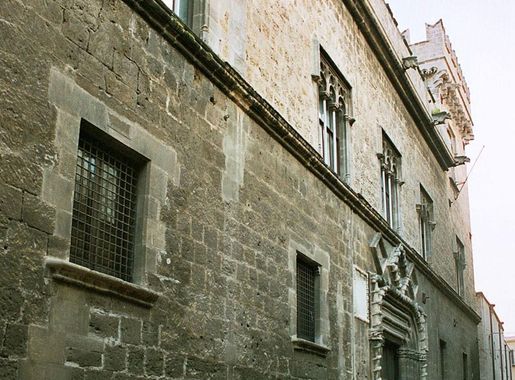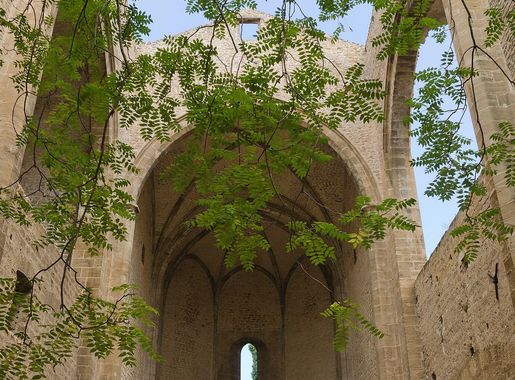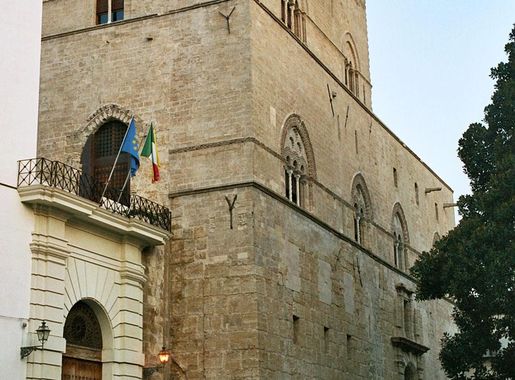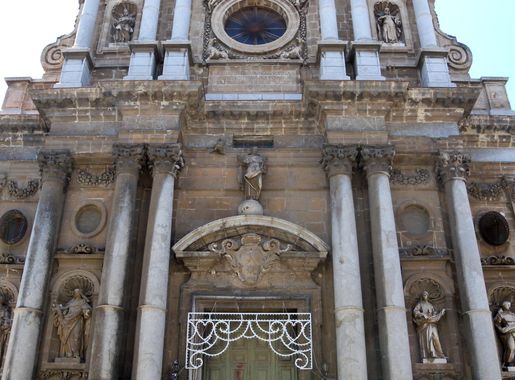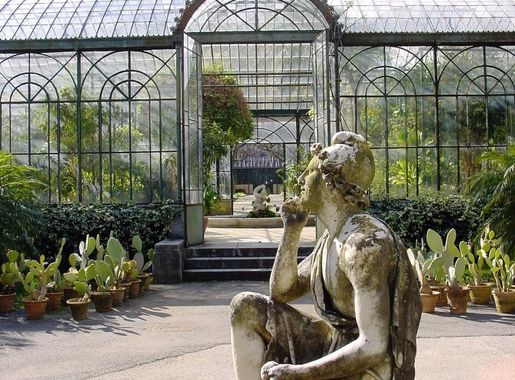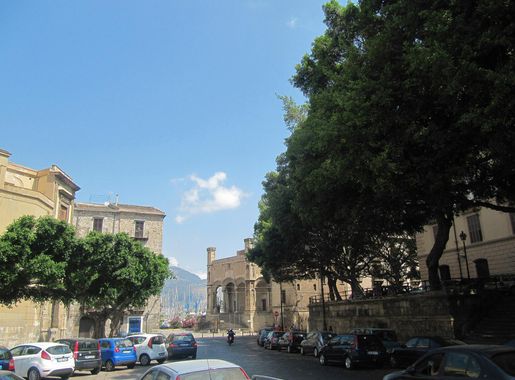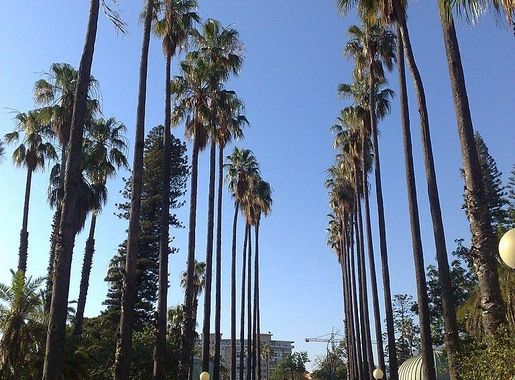
Kalsa: The Historical Heartbeat of Palermo
Discover Kalsa: Palermo's historic neighborhood, where ancient architecture, art, and vibrant street life blend seamlessly by the Mediterranean Sea.
Kalsa, a vibrant neighborhood in Palermo, Italy, is a treasure trove of history and culture. Nestled by the sea, this area was once the administrative center of the Arab rulers in the 9th century. Its name, derived from the Arabic 'Al-Khalisa,' meaning 'the pure,' speaks to its rich heritage. Wandering through Kalsa, you'll find yourself immersed in a labyrinth of narrow streets, each turn revealing stunning architecture, from ancient churches to noble palaces. The neighborhood is home to several notable landmarks, including the Palazzo Abatellis, a 15th-century palace now serving as an art museum. Here, you can admire works like the Annunciation by Antonello da Messina. Another must-visit is the Church of Santa Maria dello Spasimo, a roofless church that hosts various cultural events and concerts, offering a unique blend of history and contemporary art. Kalsa is also known for its lively atmosphere, with bustling markets and charming squares. Piazza Marina, one of the largest squares in Palermo, is perfect for a leisurely stroll or a relaxing break at a café. The nearby Orto Botanico, a lush botanical garden, provides a peaceful escape from the city's hustle and bustle. As you explore Kalsa, you'll also encounter a variety of eateries serving traditional Sicilian cuisine, ensuring a delightful culinary experience.
Local tips in Kalsa
- Visit early in the morning to avoid crowds and enjoy the serene beauty of the streets.
- Wear comfortable shoes as the cobblestone streets can be uneven.
- Don't miss the local markets for fresh produce and unique souvenirs.
- Check the schedule for events at Santa Maria dello Spasimo to catch a concert or cultural event.
- Try local Sicilian dishes at the neighborhood's traditional trattorias.
Kalsa: The Historical Heartbeat of Palermo
Kalsa, a vibrant neighborhood in Palermo, Italy, is a treasure trove of history and culture. Nestled by the sea, this area was once the administrative center of the Arab rulers in the 9th century. Its name, derived from the Arabic 'Al-Khalisa,' meaning 'the pure,' speaks to its rich heritage. Wandering through Kalsa, you'll find yourself immersed in a labyrinth of narrow streets, each turn revealing stunning architecture, from ancient churches to noble palaces. The neighborhood is home to several notable landmarks, including the Palazzo Abatellis, a 15th-century palace now serving as an art museum. Here, you can admire works like the Annunciation by Antonello da Messina. Another must-visit is the Church of Santa Maria dello Spasimo, a roofless church that hosts various cultural events and concerts, offering a unique blend of history and contemporary art. Kalsa is also known for its lively atmosphere, with bustling markets and charming squares. Piazza Marina, one of the largest squares in Palermo, is perfect for a leisurely stroll or a relaxing break at a café. The nearby Orto Botanico, a lush botanical garden, provides a peaceful escape from the city's hustle and bustle. As you explore Kalsa, you'll also encounter a variety of eateries serving traditional Sicilian cuisine, ensuring a delightful culinary experience.
Iconic landmarks you can’t miss
Quattro Canti
Discover the stunning baroque elegance of Quattro Canti, a landmark square in Palermo that embodies the city's rich history and vibrant culture.
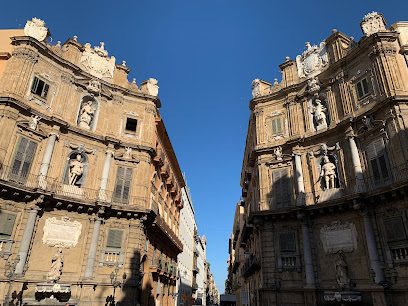
Foro Italico
Discover the natural beauty and rich history of Foro Italico, a lush urban park in Palermo, Italy, perfect for relaxation and cultural immersion.
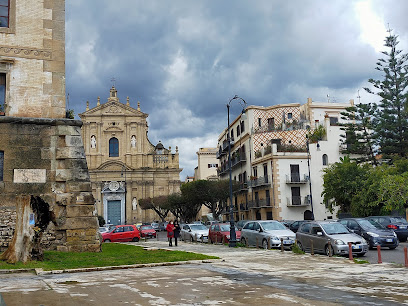
Palazzo Abatellis
Explore the artistic treasures of Palazzo Abatellis, a renowned museum in Palermo showcasing Sicily's rich cultural heritage and stunning masterpieces.
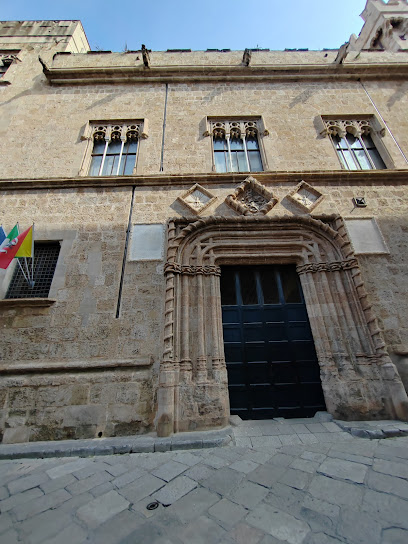
Palazzo Chiaramonte Steri
Discover the grandeur of Palazzo Chiaramonte Steri, a historical castle and museum in Palermo, showcasing Sicily's rich cultural heritage and stunning architecture.
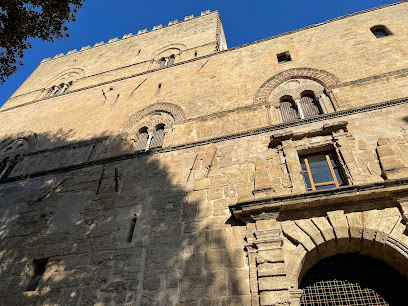
Palazzo Forcella De Seta
Explore the stunning Palazzo Forcella De Seta in Palermo, a historical gem showcasing Sicilian architectural beauty and cultural richness.
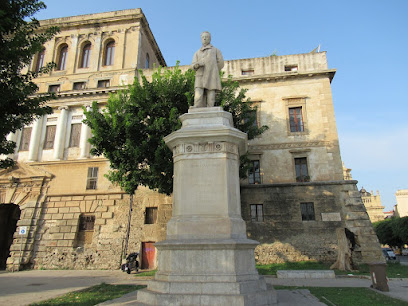
Mura delle Cattive
Explore the rich history of Mura delle Cattive, a captivating landmark in Palermo that reveals the city's fascinating past and stunning architectural beauty.
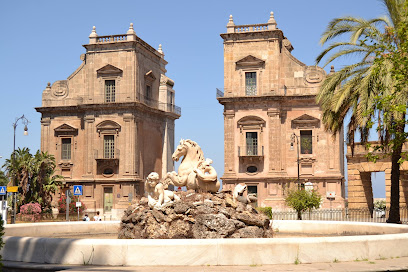
Porta dei Greci
Explore the architectural beauty and historical significance of Porta dei Greci, a must-visit landmark in Palermo, Italy.
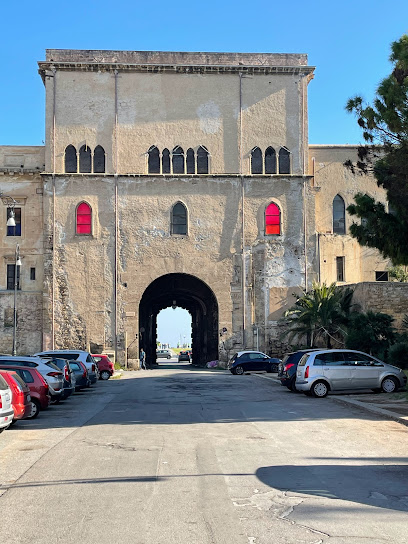
Murale della Kalsa
Explore the Murale della Kalsa, a vibrant street art masterpiece in Palermo's historic Kalsa district, reflecting the city's rich culture and creativity.
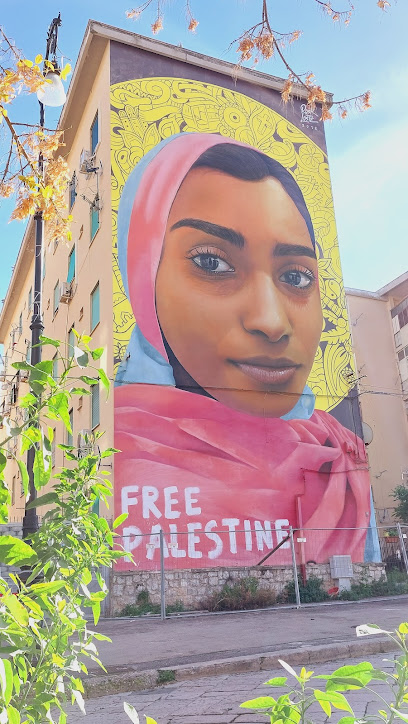
Ville de Palerme
Experience the rich history, vibrant culture, and delicious cuisine of Palermo, Sicily's enchanting capital city, a must-visit destination for every traveler.
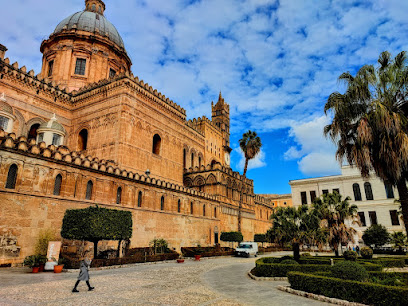
MONUMENTO DI PATRIA CARITA'
Explore the Monumento di Patria Carità in Palermo, a stunning tribute to national pride and sacrifice, surrounded by rich history and vibrant culture.
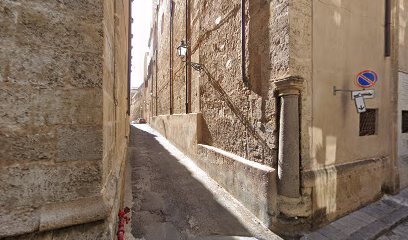
Essential places to dine
Antica Focacceria San Francesco
Experience authentic Sicilian flavors at Antica Focacceria San Francesco in Palermo—where history meets delicious cuisine.
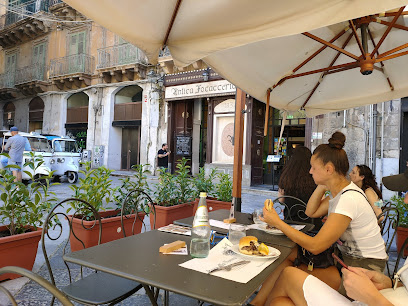
Ristorante Quattro mani
Experience authentic Sicilian flavors at Ristorante Quattro Mani in Palermo - where every meal is a celebration of local culinary traditions.
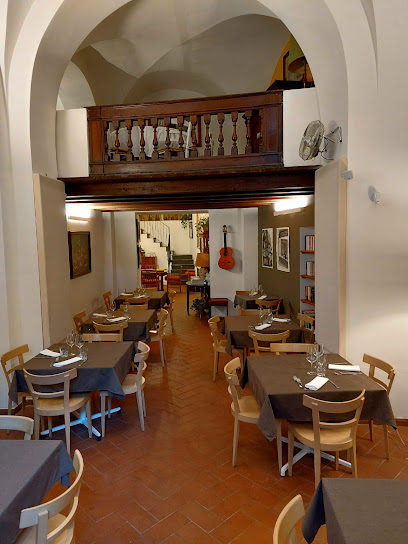
Ciccio in Pentola
Discover Ciccio in Pentola, where fresh seafood meets authentic Sicilian charm in the heart of Palermo.
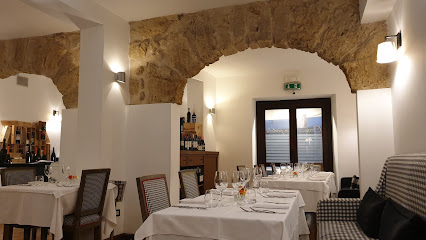
La Cambusa
Experience authentic Sicilian cuisine at La Cambusa in Palermo's charming Piazza Marina - where flavor meets tradition in every bite.

L’ottava nota
Experience fine Italian dining at L’ottava nota in Palermo – where exquisite Mediterranean flavors meet elegant ambiance.
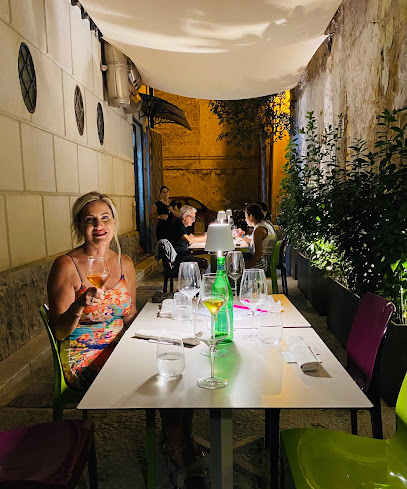
Osteria dei Vespri
Discover the heart of Sicilian cuisine at Osteria dei Vespri in Palermo - where tradition meets modernity in every dish.
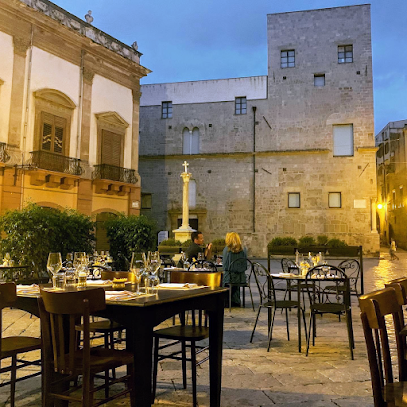
Carizzi d'amuri
Experience authentic Sicilian seafood cuisine at Carizzi d'amuri, where every dish is crafted with love and tradition in the heart of Palermo.
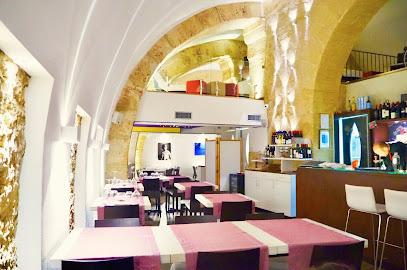
Scjabaca
Discover Scjabaca: A top-rated restaurant in Palermo offering exquisite Sicilian cuisine with modern flair.
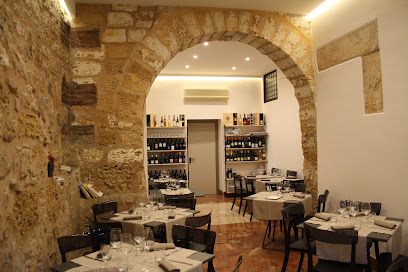
Garraffo Ristorante Wine bar
Discover authentic Sicilian cuisine at Garraffo Ristorante Wine Bar in Palermo, where tradition meets taste in every dish.
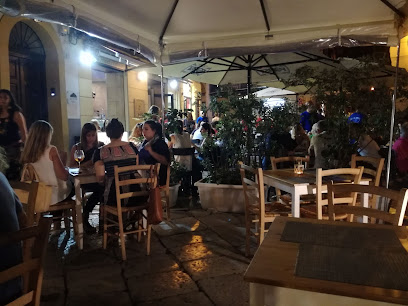
Trattoria Torremuzza alla Kalsa
Discover authentic Sicilian flavors at Trattoria Torremuzza alla Kalsa - a traditional restaurant specializing in fresh seafood and local cuisine.
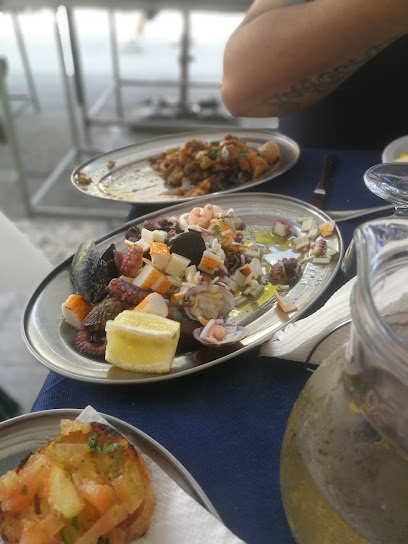
Markets, malls and hidden boutiques
Donnarumma Souvenirs
Discover unique Sicilian treasures at Donnarumma Souvenirs, a charming store in Palermo offering handmade crafts and local delicacies.
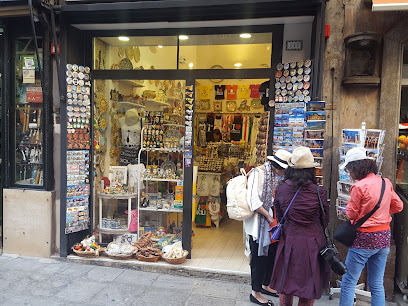
JUNKLE
Explore JUNKLE in Palermo for stylish fashion accessories that embody Sicilian charm and craftsmanship.

CutieCuticchi
Discover unique Sicilian gifts at CutieCuticchi, where handcrafted artistry meets the vibrant culture of Palermo.
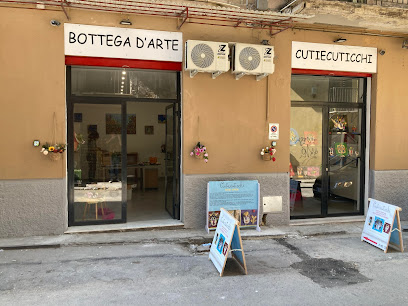
Vali Boutique
Explore Vali Boutique in Palermo for unique clothing pieces that embody Italian fashion and contemporary style.
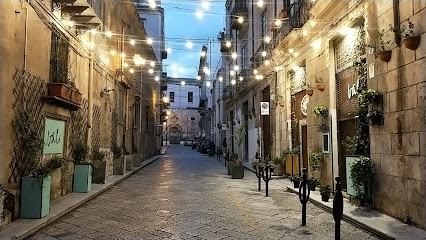
SOUVENIR SAN GIUSEPPE
Explore Souvenir San Giuseppe in Palermo for unique Sicilian gifts and authentic local crafts, capturing the essence of Sicily in every purchase.
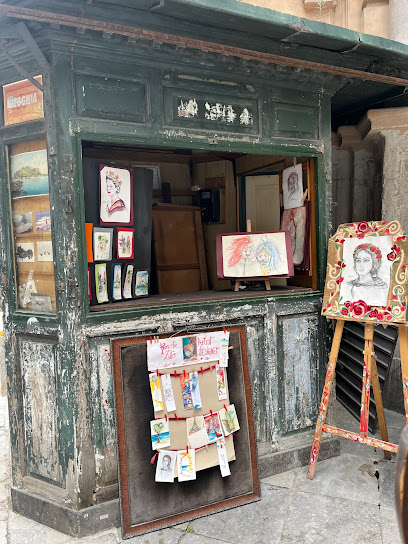
À Putia
Explore À Putia: Your go-to gift shop for authentic Sicilian crafts, souvenirs, and artisanal delights in the heart of Palermo.
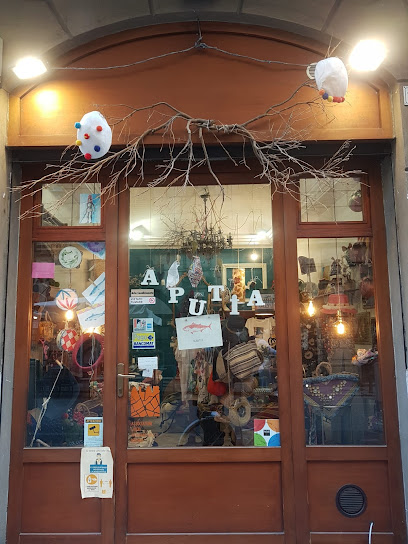
Shajid Store
Explore Shajid Store in Palermo for a charming selection of unique souvenirs, local crafts, and essential travel items.
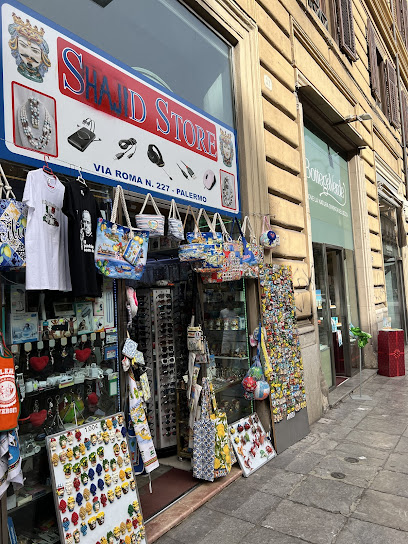
Negozio di regali
Explore the best of Sicilian craftsmanship at Negozio di Regali, where unique gifts and local treasures await every visitor.
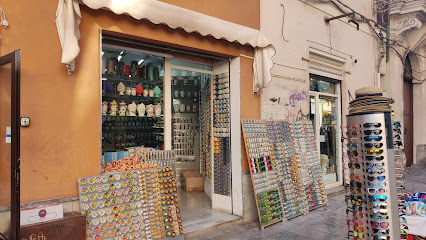
Borgo Strafalè
Explore the enchanting Borgo Strafalè in Palermo for unique gifts, local crafts, and authentic Sicilian souvenirs that capture the essence of your travels.
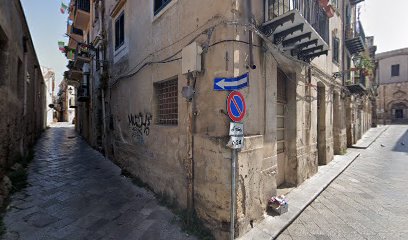
Toffee Boutique
Explore Toffee Boutique in Palermo for unique clothing and accessories that capture the essence of Sicilian style and contemporary fashion.
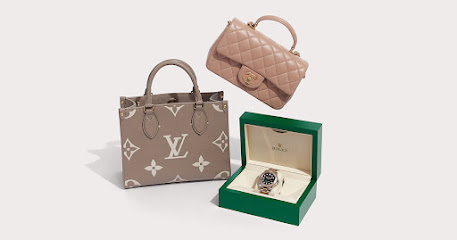
Essential bars & hidden hideouts
Monkey pub
Discover the local vibe at Monkey Pub in Palermo, where drinks, music, and community converge for an unforgettable night out.
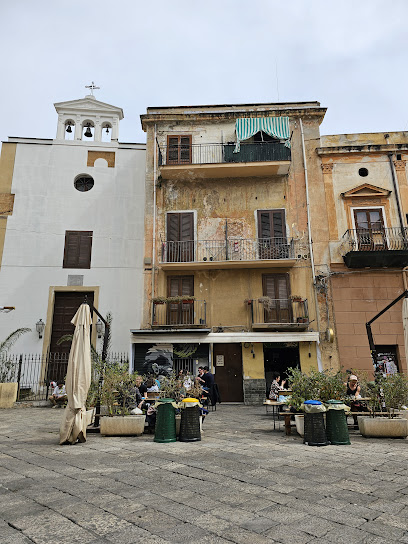
Castigamatti Dischi e Bar
Discover the perfect blend of cocktails and vinyl records at Castigamatti Dischi e Bar in Palermo, where music and mixology come together.
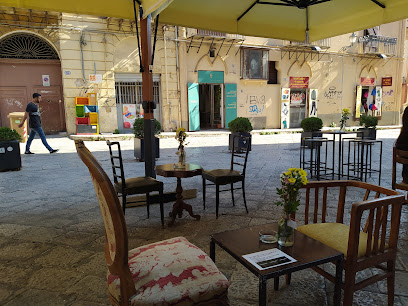
Botanico Bar
Discover the vibrant Botanico Bar in Palermo, where art meets nightlife with exquisite cocktails, live music, and an unforgettable atmosphere.
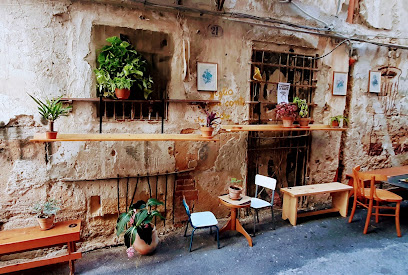
SPINA BAR PALERMO
Discover Spina Bar, a vibrant cocktail bar in Palermo, offering expertly crafted drinks and a lively atmosphere perfect for nightlife enthusiasts.
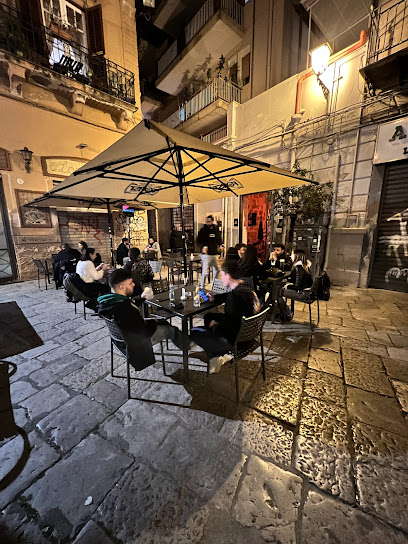
New Art Wine Bar
Experience the vibrant ambiance and exquisite wines at New Art Wine Bar, a must-visit destination in the heart of Palermo for all wine lovers.
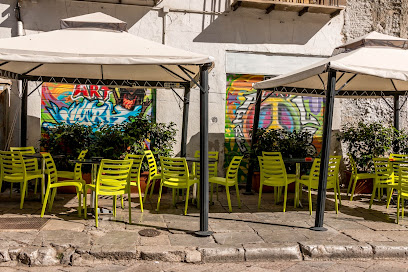
Zammù Drink&More - Pub, Lounge Bar, Cocktail bar
Experience the vibrant nightlife of Palermo at Zammù Drink&More, the ultimate cocktail bar for locals and tourists alike.
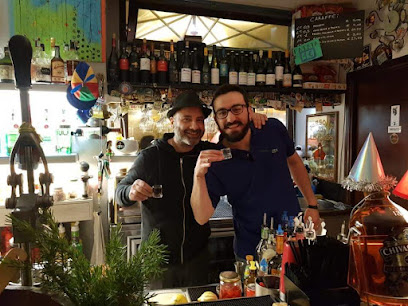
Drunk's
Discover the vibrant nightlife of Palermo at Drunk's, an affordable pub and night club offering exciting live music and a lively atmosphere.
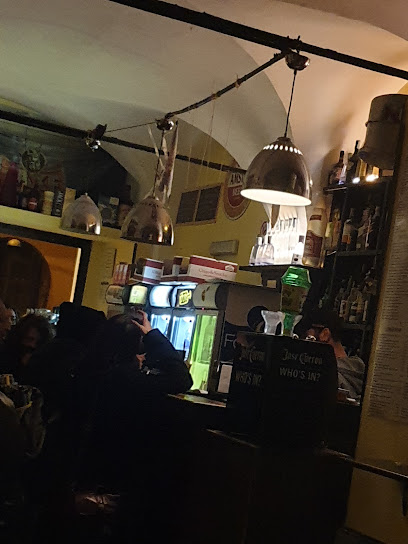
BÀSOLI
Discover the vibrant nightlife at BÀSOLI, Palermo's go-to pub for locals and tourists alike, offering delicious drinks and a lively atmosphere.
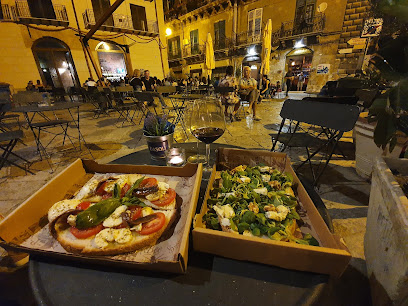
CHEERS WINE BAR
Experience the essence of Palermo at Cheers Wine Bar, where local wines and Sicilian flavors come together in a charming atmosphere.
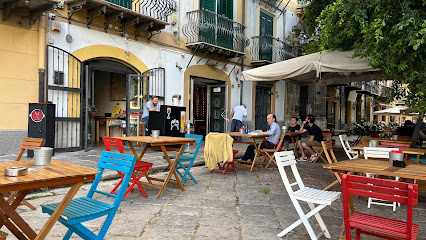
Backdoor Palermo
Unwind at Backdoor Palermo, a premier cocktail bar offering exquisite drinks in the heart of Palermo's vibrant nightlife.
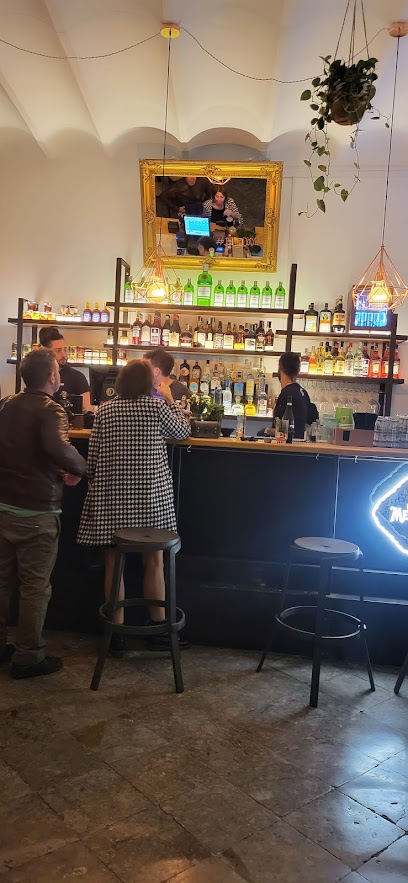
Local Phrases
-
- HelloCiao
[chow] - GoodbyeArrivederci
[ah-ree-veh-dehr-chee] - YesSì
[see] - NoNo
[noh] - Please/You're welcomePer favore/Prego
[pehr fah-voh-reh/preh-goh] - Thank youGrazie
[graht-zee-eh] - Excuse me/SorryMi scusi/Scusa
[mee skoo-zee/skoo-zah] - How are you?Come stai?
[koh-meh stai] - Fine. And you?Bene. E tu?
[beh-neh. eh too] - Do you speak English?Parli inglese?
[pahr-lee een-gleh-zeh] - I don't understandNon capisco
[nohn kah-pee-scoh]
- HelloCiao
-
- I'd like to see the menu, pleaseVorrei vedere il menu, per favore
[vohr-ray veh-deh-reh eel meh-noo, pehr fah-voh-reh] - I don't eat meatNon mangio carne
[nohn mahn-joh kahr-neh] - Cheers!Salute!
[sah-loo-teh] - I would like to pay, pleaseVorrei pagare, per favore
[vohr-ray pah-gah-reh, pehr fah-voh-reh]
- I'd like to see the menu, pleaseVorrei vedere il menu, per favore
-
- Help!Aiuto!
[ah-yoo-toh] - Go away!Vai via!
[vah-ee vee-ah] - Call the Police!Chiama la polizia!
[kee-ah-mah lah poh-lee-ts-yah] - Call a doctor!Chiama un dottore!
[kee-ah-mah oon doh-toh-reh] - I'm lostMi sono perso
[mee soh-no pehr-soh] - I'm illMi sento male
[mee sehn-toh mah-leh]
- Help!Aiuto!
-
- I'd like to buy...Vorrei comprare...
[vohr-ray kohm-prah-reh] - I'm just lookingSto solo guardando
[stoh soh-loh gwar-dahn-doh] - How much is it?Quanto costa?
[kwahn-toh koh-stah] - That's too expensiveÈ troppo caro
[eh troh-poh kah-roh] - Can you lower the price?Puoi abbassare il prezzo?
[pwah-ee ahb-bahs-sah-reh eel preh-tsoh]
- I'd like to buy...Vorrei comprare...
-
- What time is it?Che ora è?
[keh oh-rah eh] - It's one o'clockÈ l'una
[eh loo-nah] - Half past (10)Sono le dieci e mezza
[soh-no leh dee-eh-chee eh meh-tsah] - MorningMattina
[maht-tee-nah] - AfternoonPomeriggio
[poh-meh-ree-joh] - EveningSera
[seh-rah] - YesterdayIeri
[yeh-ree] - TodayOggi
[oh-jee] - TomorrowDomani
[doh-mah-nee] - 1Uno
[oo-noh] - 2Due
[doo-eh] - 3Tre
[treh] - 4Quattro
[kwah-troh] - 5Cinque
[cheen-kweh] - 6Sei
[say] - 7Sette
[seht-teh] - 8Otto
[oh-toh] - 9Nove
[noh-veh] - 10Dieci
[dee-eh-chee]
- What time is it?Che ora è?
-
- Where's a/the...?Dov'è...?
[doh-veh] - What's the address?Quale è l'indirizzo?
[kwah-leh eh leen-dee-ree-tsoh] - Can you show me (on the map)?Puoi mostrarmi (sulla mappa)?
[pwah-ee moh-stahr-mee soo-lah mahp-pah] - When's the next (bus)?Quando passa il prossimo (autobus)?
[kwahn-doh pahs-sah eel prohs-shee-moh ow-toh-boos] - A ticket (to ....)Un biglietto (per ....)
[oon beel-yet-toh pehr]
- Where's a/the...?Dov'è...?
History of Kalsa
-
Kalsa, known as the 'Kalsa District', was established during the Arab conquest of Sicily in the 9th century. As the Arabs transformed Palermo into a thriving cultural and economic hub, they developed Kalsa as a residential area for the elite. This period saw the construction of palaces and gardens, reflecting Islamic architectural influences and a significant shift in urban planning that emphasized beauty and functionality.
-
With the arrival of the Normans in the 11th century, Kalsa witnessed a unique cultural synthesis. The Normans built the majestic **Palazzo dei Normanni** nearby and the **Palatine Chapel**, melding Arab, Byzantine, and Norman styles. This era established Kalsa as a center of power and culture, showcasing the coexistence of different communities and laying the groundwork for Palermo's reputation as a melting pot of civilizations.
-
Throughout the 16th and 17th centuries, Kalsa experienced a decline as wealth shifted away from the area. However, during the Spanish Viceroyalty, efforts were made to revitalize Kalsa, leading to the construction of several baroque churches, including **Santa Maria della Catena**. These developments marked a resurgence of religious and cultural life in the neighbourhood, which became home to various religious orders.
-
The 20th century brought significant challenges to Kalsa, including economic decline and urban decay. Post-World War II, many residents migrated to other areas, leading to a decrease in population and the neglect of historical buildings. However, the establishment of various cultural and social initiatives in the late 20th century aimed to restore Kalsa's historical significance, rekindling interest in its rich heritage.
-
In recent years, Kalsa has undergone a renaissance, driven by cultural tourism and community-led restoration projects. The neighbourhood now hosts art galleries, cultural festivals, and markets that celebrate Sicilian traditions. Efforts to preserve the architectural integrity of Kalsa, including its historic buildings and public spaces, have turned it into a vibrant area that reflects Palermo's historical tapestry and dynamic culture.
Kalsa Essentials
-
Kalsa is centrally located in Palermo and easily accessible from other neighborhoods. If you are coming from the central train station (Stazione Centrale), you can take a local bus (Lines 101 or 104) that will bring you to Kalsa in about 15-20 minutes. Alternatively, walking from the historical center (Quattro Canti) takes about 10-15 minutes. For those arriving at Falcone-Borsellino Airport, you can take the Prestia e Comandè bus service to the city center and transfer to a local bus or taxi to reach Kalsa.
-
Kalsa is a compact neighborhood, and many attractions can be explored on foot. Walking allows you to appreciate the stunning architecture and vibrant street life. Public transport options include buses and trams, with several stops located near key sites. Bicycles can be rented from local shops or bike-sharing services for a more adventurous exploration. Taxis are also readily available and can be hailed on the street or booked via phone.
-
Kalsa is generally safe for tourists, but standard precautions should be observed. Avoid walking alone at night in poorly lit areas, especially around the waterfront. Areas like the Via Roma can be busy but are well-trafficked. Pickpocketing can occur in crowded areas, so keep your belongings secure. It is advisable to stay away from the outskirts where crime rates may be higher.
-
In case of an emergency, dial 112 for police, ambulance, or fire services. The nearest hospital is the Civico Hospital, located a short distance from Kalsa. It is important to have travel insurance that covers medical emergencies. Pharmacies are available throughout the neighborhood for minor health issues, and many are open late.
-
Fashion: Do dress modestly when visiting churches and religious sites. Avoid overly casual or revealing clothing. Religion: Do respect local customs; covering shoulders and knees is recommended in sacred places. Public Transport: Do give up your seat for elderly passengers. Don’t eat or drink on public transport. Greetings: Do greet locals with a friendly 'Buongiorno' or 'Buonasera.' A handshake is common. Eating & Drinking: Do try local street food and beverages. Don’t refuse food or drink offered as it can be seen as impolite.
-
To experience Kalsa like a local, visit the vibrant Mercato di Ballarò, where you can taste fresh produce and local delicacies. Engage with vendors for a more authentic experience. Don’t miss the chance to explore hidden gems like the Palazzo Abatellis and the Oratorio di San Lorenzo. For a unique perspective, stroll along the Foro Italico promenade, especially during sunset, to enjoy stunning views of the sea and the city.
-
Sicilians are known for their warm hospitality. It’s polite to greet shopkeepers and wait staff with a friendly 'Salve' or 'Ciao.' When visiting churches, remember to speak softly and observe any specific rules. Tipping is appreciated but not mandatory; rounding up the bill is common practice. Participate in local festivals if your visit coincides; these events are a great way to immerse yourself in the culture.
Nearby Cities to Kalsa
-
Things To Do in Catania
-
Things To Do in Taormina
-
Things To Do in Marsalforn
-
Things To Do in Xaghra
-
Things To Do in Gozo
-
Things To Do in Xlendi
-
Things To Do in Xewkija
-
Things To Do in Mellieha
-
Things To Do in Qawra
-
Things To Do in Bugibba
-
Things To Do in Mgarr
-
Things To Do in St. Julian's
-
Things To Do in Mdina
-
Things To Do in Rabat
-
Things To Do in Sliema

